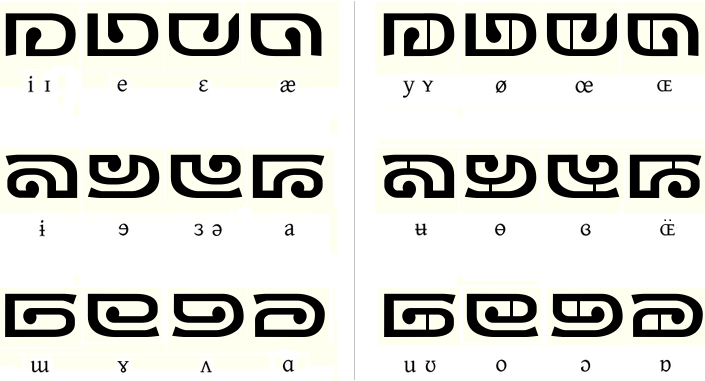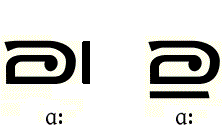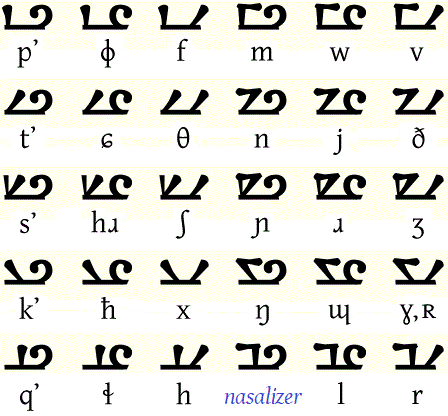This is another easily hand-written, phonetically constructed alphabet, like others in my Phonological Cypher series. This is a component syllabary, where regularly formed consonants are attached to their vowels. There is also the ability for unvoweled consonants to be stacked (for finals and clusters), similar to how they assemble in scripts like Pallava and Lanna.
Vowels
Vowels sit on the baseline and have a semi-featural system which supports the complete IPA vowel space. They are listed here with closeness decreasing from left to right, and frontness decreasing from top row to bottom. Rounding is shown with a vertical bar set within the simpler unrounded form, arranged here in the righthand rows. Lengthening may be shown with a vertical mark after the vowel (open syllable) or below the vowel (for a closed syllable).
Consonant system
Consonants comprise a pair of diacritics which sit upon their vowel. On the left half is a mark indicating phonetic location, on the right half is a mark indicating manner of production. Voicing is indicated by a short horizontal stroke above. Here are shown the unvoiced and voiced base consonants (plosive manner in most cases), sitting upon a simple horizontal – this horizontal is used for unvoweled/solo consonants. Below that are shown the manner marks.
Here is an expansion of the other consonant assemblies, shown in their solo form.
Consonants and vowels
The possibility of consonantal clusters and other unvoweled consonant situations is catered for. They are simply stacked above or below the vowel as required. If there are two base consonants, they can be written with just their location marks side-by-side, as here in “screw”. As for diphthongs and triphthongs, we can use VS instead of VV, and VSV instead of VVV, where S is one of three semivowels from the approximant column of the consonant chart above. The alternative is to simply write the second and third unconsonantalized vowels in sequence. Here are three English words transliterated.
Example
This is a transliteration of the beginning of Shakespeare’s sonnet 18, for comparison with versions of SIGIL etc etc.
Shall I compare thee to a summer’s day ...






